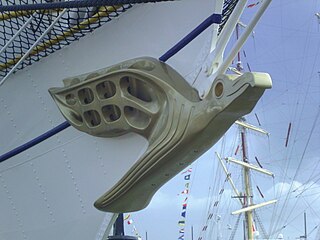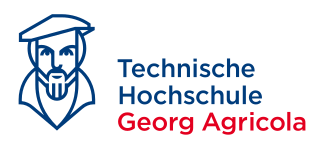
The Ruhr, also referred to as the Ruhr area, sometimes Ruhr district, Ruhr region, or Ruhr valley, is a polycentric urban area in North Rhine-Westphalia, Germany. With a population density of 2,800/km2 and a population of over 5 million (2017), it is the largest urban area in Germany and the third of the European Union. It consists of several large cities bordered by the rivers Ruhr to the south, Rhine to the west, and Lippe to the north. In the southwest it borders the Bergisches Land. It is considered part of the larger Rhine-Ruhr metropolitan region of more than 10 million people, which is the third largest in Western Europe, behind only London and Paris.

Dortmund is the third-largest city in North Rhine-Westphalia, after Cologne and Düsseldorf, and the ninth-largest city in Germany. With a population of 612,065 inhabitants, it is the largest city of the Ruhr as well as the largest city of Westphalia. It lies on the Emscher and Ruhr rivers in the Rhine-Ruhr Metropolitan Region, the second biggest metropolitan region by GDP in the European Union, and is considered the administrative, commercial, and cultural centre of the eastern Ruhr. Dortmund is the second-largest city in the Low German dialect area, after Hamburg.

Bochum is a city in North Rhine-Westphalia. With a population of 372,348, it is the sixth-largest city in North Rhine-Westphalia, one of the most populous German federal states, and the 16th-largest city in Germany. On the Ruhr Heights hill chain, between the rivers Ruhr to the south and Emscher to the north, it is the second largest city of Westphalia after Dortmund, and the fourth largest city of the Ruhr after Dortmund, Essen and Duisburg. It lies at the centre of the Ruhr, Germany's largest urban area, in the Rhine-Ruhr Metropolitan Region, the second biggest metropolitan region by GDP in the European Union, and belongs to the region of Arnsberg. Bochum is the sixth largest and one of the southernmost cities in the Low German dialect area. There are nine institutions of higher education in the city, most notably the Ruhr University Bochum, one of the ten largest universities in Germany, and the Bochum University of Applied Sciences.

Herbert Arthur Wiglev Clamor Grönemeyer is a German singer, musician, producer, composer and actor, popular in Germany, Austria and Switzerland.

The Rhine-Ruhr metropolitan region is the largest metropolitan region in Germany, with over ten million inhabitants. A polycentric conurbation with several major urban concentrations, the region covers an area of 7,110 square kilometres (2,750 sq mi), entirely within the federal state of North Rhine-Westphalia. The Rhine-Ruhr metropolitan region spreads from the Ruhr area (Dortmund-Bochum-Essen-Duisburg) in the north to the urban areas of the cities of Mönchengladbach, Düsseldorf, Wuppertal, Leverkusen, Cologne, and Bonn in the south. The location of the Rhine-Ruhr at the heart of the European Blue Banana makes it well connected to other major European cities and metropolitan areas such as the Randstad, the Flemish Diamond and the Frankfurt Rhine Main Region.

Langendreer is the largest and most populous district of the city of Bochum in the Ruhr area in Germany, with a population of 25,438 as of 31 December 2023. The district is located between the cities Dortmund, the largest city of Westphalia, to the east and Witten to the south, and four other districts of Bochum to the north and west — Langendreer-Alter Bahnhof, Bochum-Laer, Bochum-Querenburg, and Bochum-Werne. Langendreer is the easternmost district of Bochum. The district includes, among others, Kaltehardt, a mainly residential area, Langendreerholz, and Ümmingen. Bochum-Langendreer station is one of the largest railway stations in Bochum and the district is also served by Bochum-Langendreer West station. The freight station in Langendreer was one of the reasons why the village and administrative district of Langendreer was incorporated into the city of Bochum on 1 August 1929, as Bochum did not have comparable capacities. Langendreer used to be one of the main centers of the East Prussian minority in Western Germany.

Rita Süssmuth is a German politician of the Christian Democratic Union (CDU). She served as the tenth president of the Bundestag.

The Eisenbahnmuseum Bochum-Dahlhausen is a railway museum situated south of the city of Bochum in the state of North Rhine-Westphalia, Germany. It was founded by DGEG, the German Railway History Company in 1977 and is based in a locomotive depot that was built between 1916 and 1918 and ceased operation in 1969. Then DGEG took over the whole area of 46,000 square metres and built up the biggest railway museum in Germany. In the middle of the museum, there is an engine shed with fourteen tracks. A preserved turntable, coaling, watering, and sanding facilities are still in operation. This museum is integrated into The Industrial Heritage Trail a route of monuments from the history of the industry.

Dr. Heinrich Andreas Schroeteler was a German sculptor. During World War II, he commanded U-boat and received the Knight's Cross of the Iron Cross ; during the post-war years, he pursued a career in art history and archeology.

Kurt Flasch is a German philosopher, who works mainly as a historian of medieval thought and of late antiquity. Flasch was professor at the Ruhr University Bochum. He was / is a member of several German and international Academies. In 2000, he was awarded the Sigmund Freud Prize by the Deutsche Akademie für Sprache und Dichtung.

Glückauf is the traditional German miners' greeting. It describes the hope of the miners: "es mögen sich Erzgänge auftun" which is short for "Ich wünsche Dir Glück, tu einen neuen Gang auf", because, when mining for ore, without prospecting, no-one could predict with certainty whether the miners' work would lead to a reward. The greeting also expressed the desire that miners would return safely from the mine after their shift.

Marietta Piekenbrock is a German art curator, dramaturge, author and a cultural manager. Her projects combine theatre, dance, performances and music with cultural history, architecture and everyday life. As an artistic manager of the Cultural Capital of Europe RUHR.2010 and Istanbul.2010, and for the Ruhrtriennale 2012-14, she invited international artists and curators to collaborate with the local cultural participants and players on developing new artistic projects in areas of radical social change. Her programmes of events and initiatives made a strong case for sustainable cultural practice. Her 2012 series of events "No Education" promoted a new discourse on the relationship between art, children and education.
Peter Schöttler is a German historian working in France and Germany. He was a research director at the Centre national de la recherche scientifique in Paris and teaches now at the Freie Universität Berlin, where he has held an honorary professorship since 2001.

The Emilianstollen is part of a Roman copper mine on the escarpment of the Saargau in the St. Barbara district of Wallerfangen in Saarland, Germany.

Abdolrasool Vatandoust Haghighi is an Iranian archaeologist.

Jürgen Kretschmann is a German economist and university president.

DMT-Gesellschaft für Lehre und Bildung mbH (DMT-LB), based in Bochum, is a collective association of the German coal mining industry and acts as the funding organisation of Deutsches Bergbau-Museum Bochum and Technische Hochschule Georg Agricola. It was established as the Westfälische Berggewerkschaftskasse (WBK) in 1864 and merged with the Steinkohlen-Bergbau-Verein (Stbv) and Bergbau Forschung GmbH under the auspices of DeutscheMontanTechnologie e.V. (DMT) in 1990.

The Technische Hochschule Georg Agricola is a state-accredited, private university of applied sciences based in Bochum, Germany. It was founded in 1816 as a Bergschule to train mining officials and mining foremen (Steiger) and, in the 20th century, grew into an engineering college and later a university. It has borne the name of the polymath and mining pioneer Georgius Agricola since 1995.
Rudolf Vierhaus was a German historian who mainly researched the Early modern period. He had been a professor at the newly founded Ruhr University Bochum since 1964. From 1971, he was director of the Max-Planck-Institut für Geschichte in Göttingen. He became known for his research on the Age of Enlightenment.
Bankhaus Adolph Meyer was a private bank, and the oldest in Hanover, Germany. It played a prominent role in the industrialization of Lower Saxony, particularly in the cotton and coal and steel industries, especially since the time of the Kingdom of Hanover. During the Nazi era, it was "Aryanized". It is now located on Schillerstraße at the corner of Rosenstraße in Hannover's Mitte district.




















